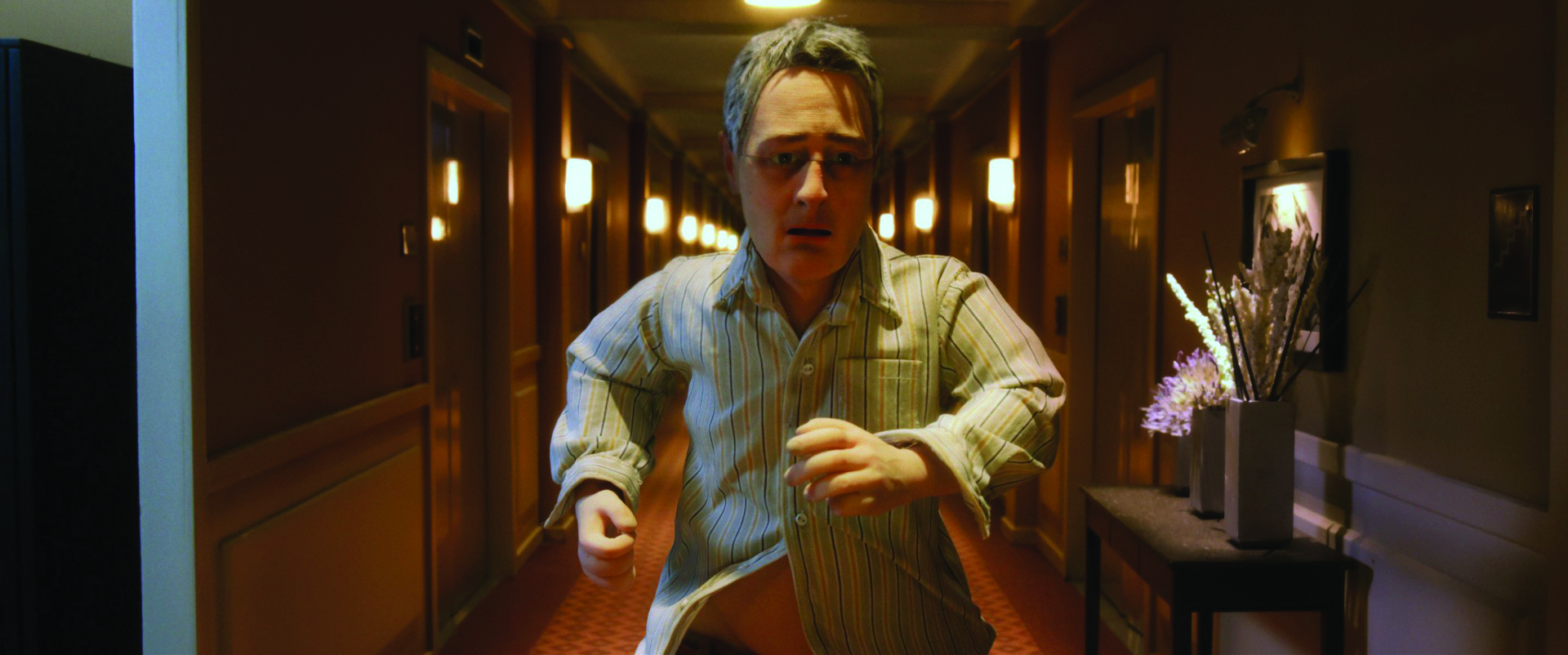
Animated movies aren’t synonymous with thought-provoking material. They are the kind that forces audiences to ruminate on the nature of human existence or some other deeply philosophical subject. Charlie Kaufman’s “Anomalisa,” originally a play released in 2005 by Kaufman himself, is one of the few exceptions.
Focusing on Michael Stone, a married man out for a business trip in Cincinnati, “Anomalisa” paints a dark, albeit at times humorous portrayal of a man facing an existential crisis. Michael struggles to cope with the routine boredom of his life, made significantly worse by his inability to connect with almost every other living person he encounters. He’s the author of a well-known book revered as a bible for customer service personnel, and happens to be in Cincinnati to give a speech to a crowd of these professionals who treat him like a celebrity.
“Anomalisa” features some truly creative narrative and structural decisions that boost its credentials as an animated film. First, it utilizes stop-motion, a time-consuming craft that, as implemented here, doesn’t rob the movie of its dramatic heft (this is not “Wallace & Gromit”). More importantly, however, the movie has a voice cast of three. Michael is voiced by David Thewlis, known world over as Professor Lupin from the “Harry Potter” franchise. He gives the character his British accent, selling the story of an Englishman who moved to America several years ago. Every other character, barring one, is voiced by Tom Noonan, and this is an extremely conscious decision on the part of the creative team.
From the very first scene when Michael lands in a Cincinnati airport, the audience realizes that barring Michael, every other on-screen character, supporting or otherwise, is an iteration of the same face, with different clothes and hair, sporting the same voice. This befuddles the audience to begin with, especially when a hotel room scene where Michael calls his wife leads to the audience hearing, yet again, the voice of Tom Noonan. With each progressing scene, however, the audience is able to fill in the puzzle, starting with the name of the hotel Michael stays at, the Fregoli Hotel. It’s a deliberate shout out to the Fregoli delusion, where a person believes that different people are in fact one person in disguise.
Naturally, this condition prompts Michael to treat the world with a consistent tenor of nonchalance and indifference. Who can bear to live in a world with just one other person? Especially if all men and women, including his wife, have the voice of a man. That is until he hears the voice of an “actual woman” passing the hotel corridor while he’s in the shower. Michael becomes panicked and eager to discover and locate the person who has a voice different to the one he has heard for so long.
Enter Jennifer Jason Leigh, playing the part of Lisa. Michael runs into her after knocking on every door on his entire floor. She, along with her friend, also came to the hotel to see Michael give his convention speech, and after a dinner conversation which included her friend as a third wheel, Michael and Lisa share most of the remaining screen time alone, setting the stage for an interesting and bizarre romance.
The second half of the film spawns a vast range of reactions. The events and dialogue elicit laughs, groans and winces and plenty of jaw-dropping moments. Leigh’s Lisa brings an upbeat innocence which is the perfect counterbalance to Michael’s solemn and stern demeanor. This odd mismatch is what provides most of the comedy, but Michael’s responses, especially his romanticism, make the audience queasy and squirm. He goes on and on about Lisa’s voice, which as understood in the context makes sense, as every other person he has encountered has had the same voice, and that of a man no less. Lisa’s voice is the central instrument of the film and shatters the lens through which Michael has viewed the world, allowing him to see and hear her differently than everyone else.
Being a stop-motion film, the camera maneuvers are steady and controlled to give the characters’ movements room to be more pronounced. This prevents any volatile jarring on the screen and complements the more active sequences, like when Michael rushes down a corridor or a flight of stairs. The cinematography and art direction were on point, and there’s no doubt that a Golden Globe nomination was warranted.
With a film such as “Anomalisa,” its strength lies in its ambiguity. Every member of the audience is bound to have a different opinion of its conclusion. Some may see finality or closure to a bizarre mid-life crisis, while others will see a continuation of the status quo. But for the span of the movie, viewers will be forced to observe a world by ignoring the visual schemata they are accustomed to. Appearance is trivial here.

